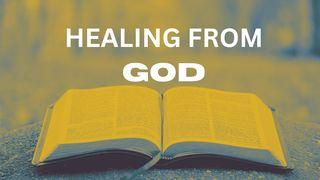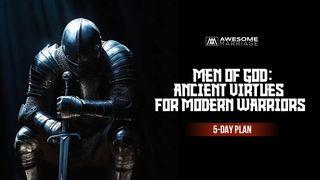Being God's Image: Why Creation Still MattersSample

A Restored Partnership
Mary Magdalene, a woman who had suffered much, is the first to see the resurrected Jesus. He meets her in the garden where she is weeping and greets her as “Woman” (John 20:15). In that context, this reminds us of the Garden of Eden.
When Eve’s eyes were opened, she was ashamed and hid. Here, Mary’s eyes are opened so that she can recognize Jesus. Then Jesus calls her by name and commissions her to tell the other disciples that He’s alive (John 20:16-18). Jesus could have appeared directly to the men, but instead, He sent Mary. This moment is a beautiful restoration of Creation design for partnership, contrary to first-century cultural convention. The first woman had failed in her vocation as an ally to the first man. Eve ought to have helped Adam obey God and carry out His commission in the Garden of Eden; instead, she led the way in rebellion. In Genesis 3:15, God announced that her “seed” would crush the serpent. Now Jesus, the seed of the woman, meets Mary in the garden, calls her "Woman," and appoints her as an ally in the work of proclamation. Eve’s rebellion is answered by Mary Magdalene’s commissioning in the garden.
What was broken can be mended. As Joel announced and Peter preached, “your sons and daughters will prophesy” (Joel 2:28; Acts 2:17 NIV, emphasis added).
Paul invites us to compare Adam and Jesus in a similar way. Adam’s sin resulted in death for humanity as a whole, while Jesus’ obedience to death restores humanity to the life God intended from the start—a life in which we reign with Him (Romans 5:17). We enter this life by identifying with His Death and Resurrection in tangible ways (Romans 6:5). One key way to participate in the Death of Christ is by killing our selfish desires (Romans 8:13; Colossians 3:5). The key is not to ignore those desires, but to surrender them in the Presence of God, asking Him to breathe into us the Spirit’s empowerment to live out of our true identity. As Paul writes, “If you live according to the flesh, you will die; but if by the Spirit you put to death the misdeeds of the body, you will live” (Romans 8:13).
The life Paul envisions is not disembodied but transformed. He has just said that “he who raised Christ from the dead will also give life to your mortal bodies because of his Spirit who lives in you” (Romans 8:11). As we await our own resurrection, we’re invited to participate in Christ’s work of transformation even now. To do so is to experience God’s true intention for humanity.
Adapted from Being God’s Image: Why Creation Still Matters. Copyright © 2023 by Carmen Joy Imes. Used by permission. For more information, please visit www.ivpress.com/being-god-s-image.
Scripture
About this Plan

What does it mean for humans to be the image of God? This reading plan explores some of the Bible’s key texts that unveil our human identity and purpose.
More
We would like to thank InterVarsity Press for providing this plan. For more information, please visit: https://www.ivpress.com/being-god-s-image
Related Plans

Unmasking Narcissism

Living With a Strong-Willed Child

Alive and on Fire - a Video Devo With Illusionist, Dustin Tavella

Healing From God

From Acceptance to Approval: Living a Life That Pleases the Father

Islands, Tides, and the Deep: A Marriage Message From the Sea

Men of God: Ancient Virtues for Modern Warriors

Be Ye Holy: The Holy Spirit's Role in Our Lives

Be Still and Know: 7 Days to Recenter Your Heart on God
